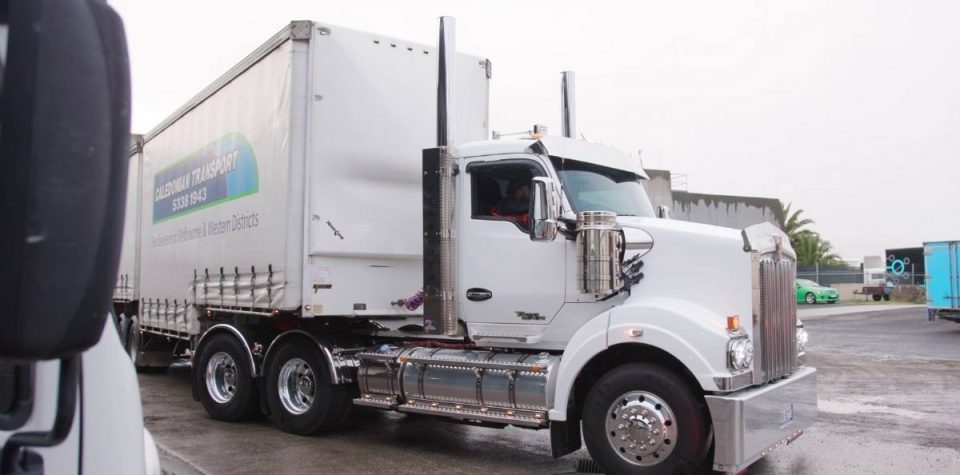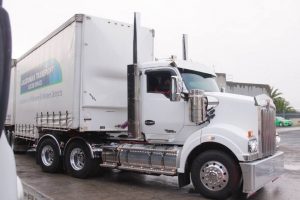Table of Contents:
How logistics software can be employed to ensure prime cattle get from station gates in the centre of Australia to the Adelaide cattle market in the best shape.
“Yet they got those cattle right to Adelaide and sold them in the saleyards there. A marvellous trip.”
– Ion L. Idriess, The Cattle King
The logistics of cattle transport have come a long way from the dusty Outback cattle-droving trails of the old days. Gone are the days of stampedes, dry billabongs, and epic drives across unforgiving terrains. Today, in the heart of Australia, cattle from the stations along the Oodnadatta Track — places like Anna Creek Station, the world’s largest cattle station — are delivered to the bustling Adelaide saleyards by road train.
But for loads of cattle to arrive safely in Adelaide, having crossed almost half of the continent in the process, a complex web of intricate logistics systems has to be utilised. In this blog post, we are going to delve into the intricate logistics involved in this journey. We’ll also hark back to the droving days of legends like Henry Readford, whose epic cattle drive is the stuff of Australian folklore.
So chuck your swag in the back of the ute and let’s head north along the Oodnadatta Track to William Creek.
The Cattle Journey Begins.
Cattle transportation is a complex operation. It involves meticulous planning, health checks, and stringent compliance with regulations. It is a task that demands precision, making logistics software an indispensable tool in this endeavour.
But it hasn’t always been that way. In the early days of Australia’s cattle industry, drovers played a key role in getting herds of cattle from the stations of the interior to the coastal markets where they could be sold, processed and shipped. You can still imagine the drovers on the stock routes as you drive the Outback tracks today. Many roads have widely spaced fences along their edges where the herds once moved ponderously along, watched over by laconic drovers astride their stock horses, a string of pack animals behind them.
Captain Starlight
Nor we all of the early cattle drives entirely legal. The legend of Henry Readford, a Queensland drover turned cattle rustler, is one of Australia’s most incredible outback adventures. In The Cattle King, Ion L. Idriess’s biography of Sir Sidney Kidman, the author describes Readford’s epic cattle drive.
“A very large mob of cattle from a pioneer station in Queensland’s far north simply vanished, as if the Earth had swallowed men and beasts. It was one of the biggest cattle stealing episodes in the world’s history; and the leader of the gang responsible was one of the greatest bushmen Australia has ever known. He travelled straight for the South Coast, nearly two thousand miles away; followed down the Queensland-Territory border and vanished into the sand hills. Arid, totally unknown country except that rumour said much was desert or near desert, with water holes unknown. Yet they got those cattle right to Adelaide and sold them in the saleyards there. A marvellous trip.”
Readford may or may not have been the inspiration for Captain Starlight, the main character in Rolf Boldrewood’s iconic novel of Australian bushranging Robbery Under Arms. Nevertheless, the logistics involved with successfully droving cattle across such a vast swath of Australia — local knowledge, animal welfare, route planning, etc — can be seen as a forerunner to the aspects of logistics still used in transporting cattle today.
On The Road.
Transporting cattle in Australia is a complex undertaking, where every step in the journey requires meticulous attention to detail. The intricacies of cattle transportation extend to aspects such as arranging transport, route optimisation, planning for weather events, health checks and compliance with regulations. All of these components need to align to ensure the well-being of the animals and maintain the integrity of the supply chain.
A healthy cargo
A key part of cattle transportation involves rigorous health checks to ensure that the animals are fit for travel. These checks are not just routine but are vital to preventing the spread of diseases and ensuring the overall health of the livestock. Veterinarians play a crucial role in assessing the health of the cattle before they embark on their journey and they create accurate records of these checks. Logistics software systems can collect, collate and analyse these records, making them easily available for scrutiny at a later date.
Welfare and compliance
Compliance with regulations is another intricate facet of cattle transport. Various rules and regulations govern the transportation of livestock in Australia, with a focus on animal welfare and ethical practices. These regulations dictate factors like loading densities, transportation durations, and rest periods to safeguard the cattle’s welfare throughout the journey.
There are also stringent regulations around rest periods for drives, ensuring that fatigue does not put the cattle, the public or the driver at risk. Once again, logistics software systems are invaluable for monitoring driver behaviour, rest stops, refuelling and food options, and route planning to avoid delays.
Trucks on the Tracks
The route from William Creek to Adelaide follows the Oodnadatta Track and passes through the town of Maree. By the way, there’s a great pub there if you happen to be passing! It then continues south along the Outback Highway and the Flinders Ranges Way. This journey through the heart of the Australian outback spans vast expanses of arid terrain and rugged landscapes.
Big rigs
Cattle are transported in six-deck road train units, each capable of holding 108 steers. These road trains, stretching 53.6 meters in length, are hauled by powerful 600-horsepower prime movers. To support their massive weight, each road train is equipped with 80 wheels on the road, ensuring stability and durability even on the roughest terrains. They carry a reserve of 8 spare tires, which tells you something about the challenges they face on this rugged route. Additionally, these behemoths carry 2,000 litres of diesel, with a consumption rate of approximately 1 litre per kilometre.
The challenges of road transport for cattle along this route are numerous and daunting. One of the primary concerns is the well-being of the livestock. These road trains must make carefully timed rest stops to allow the cattle to rest, hydrate, and recover from the journey’s stresses. Moreover, climate control becomes vital, especially considering the harsh weather conditions in the Australian Outback. The extreme heat and arid landscapes demand measures to ensure that the cattle remain comfortable and safe throughout the journey.
Mechanised Swaggies
Logistics software emerges as the unsung hero in this journey. You won’t hear Slim Dusty singing about software in songs like Mechanised Swaggie, even though it plays a pivotal role in the process. The advanced features of logistics software encompass route planning that navigates through the vast and often unforgiving terrain, real-time monitoring to track the well-being of the stock and the driver, and comprehensive safety checks to guarantee a secure journey.
It ensures that rest stops are strategically planned, allowing the cattle to recover promptly. Additionally, it monitors climate control systems inside the transport vehicles to ensure that the animals are kept in optimal conditions. Logistics software transforms this colossal endeavour into a carefully orchestrated and efficient operation, making the seemingly impossible journey from William Creek to Adelaide not only achievable but also humane and safe for the cattle.
Maintenance is also a crucial part of ensuring that road trains don’t break down en route. Logistics software systems allow trucking companies, such as Alice Springs-based, road train specialists Tanami Transport, to schedule regular maintenance checks to keep their fleets operating at an optimum level.
Droving in the Modern Era.
In the multifaceted process of transporting livestock, logistics software emerges as a game-changer. It streamlines the logistical aspects of cattle transportation, from route planning to real-time monitoring. Logistics software not only ensures compliance with regulations but also optimises the journey for efficiency and safety. It keeps track of critical data, including health check records, compliance records, and even climate control inside the transport vehicles, guaranteeing the well-being of the animals on their journey from William Creek to the Adelaide saleyards. Captain Starlight couldn’t have done it better.



